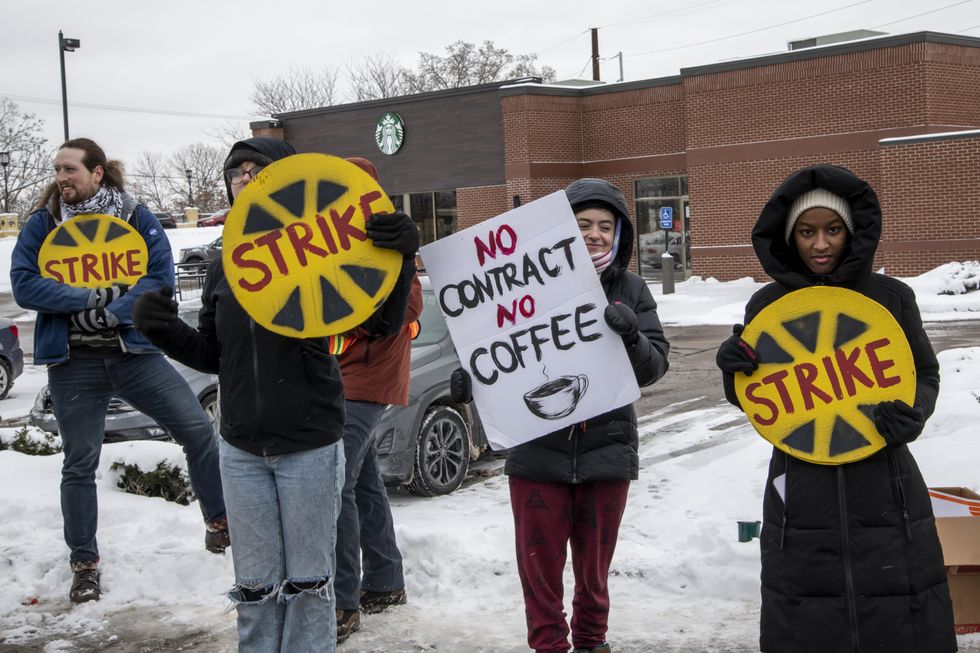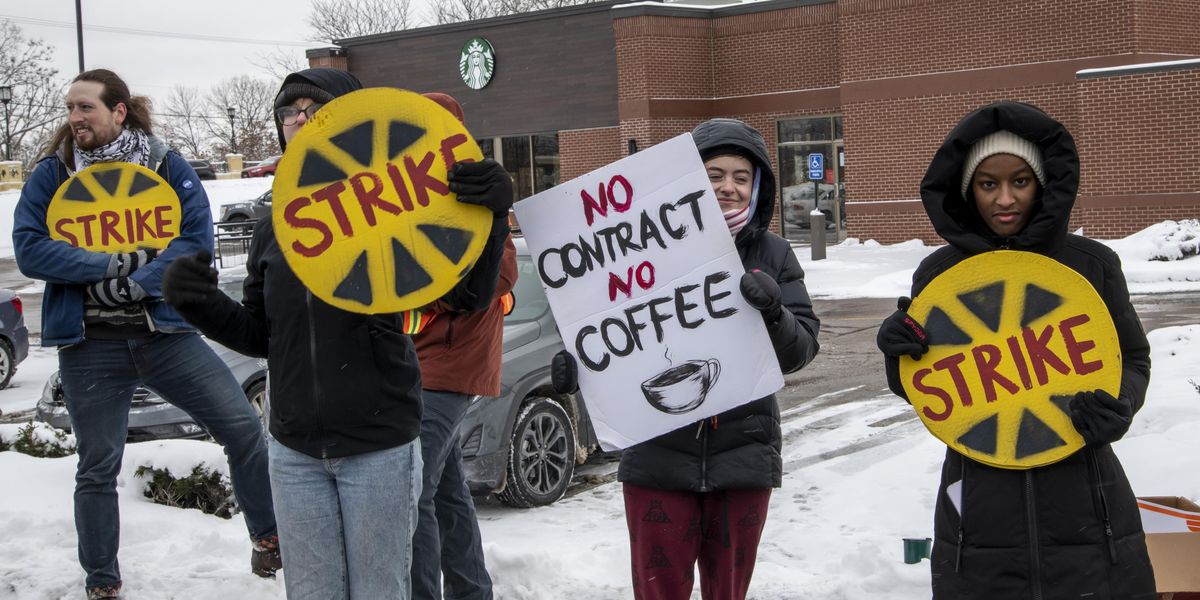
Labor advocates renewed calls for boosting U.S. worker rights and protections on Thursday as federal data revealed that despite union membership rising by 273,000 from 2021 to 2022, a
jump in nonunion jobs meant the unionization rate fell from 10.3% to a record low of 10.1%.
“In 1983, the first year where comparable union data are available, the union membership rate was 20.1% and there were 17.7 million union workers,” the Bureau of Labor Statistics (BLS)
noted in a statement announcing the new figures.
“These statistics highlight the need for the Protecting the Right to Organize (PRO) Act and the Public Service Freedom to Negotiate Act.”
The number of workers who held a job covered by a union contract—including those who report no union affiliation—rose by 200,000 to 16 million last year, but the percentage of employees represented dropped from 11.6% to 11.3%, according to the BLS.
The bureau found that though 7.1 million public sector employees belonged to unions in 2022, similar to the 7.2 million private sector workers, the union membership rate was 33.1% for the public sector compared with just 6% for the private sector.
As The
Washington Postreported:
The lackluster figures reflect how far unions have to go to see an upsurge in membership, especially in a year of booming job growth. More than 5 million jobs were created in 2022 across the economy, especially in industries where union membership is lower, such as leisure and hospitality, meaning union jobs did not outpace the growth of nonunion jobs. The economy also launched millions of new businesses, where jobs rarely start off unionized. And many of the high-profile victories at Starbucks, Apple, and REI, for example, added a relatively small number of union members. A 2022
Bloomberg analysis of labor data found that the average unionized Starbucks store added 27 workers to union rolls.Despite the continued low union numbers, labor historians say there’s been a major shift underway, propelled by pandemic conditions, in how Americans view unions. More Americans said they approved of unions in 2022 than at any point since 1965—some 71% of those polled, according to Gallup.
Responding to the BLS release, the AFL-CIO, a federation of unions representing 12.5 million workers,
asserted, “These statistics highlight the need for the Protecting the Right to Organize (PRO) Act and the Public Service Freedom to Negotiate Act, which will hold union-busting companies and organizations accountable and give workers the negotiating power they deserve.”
Specifically pointing to the record-low unionization rate last year, Nina Turner, a former Democratic congressional candidate and senior fellow at the Institute on Race, Power, and Political Economy, said that “this is a move in the wrong direction.”
Noting the same statistic, Democrats on the U.S. House Committee on Education and the Workforce
tweeted: “Unfortunately, this is not a surprise even though unions are extremely popular among workers. This is a direct result of employers using illegal union-busting tactics and Republicans turning their backs on working people.”
The panel’s Democrats also called on Congress to pass the PRO Act—a historic
proposal to reform U.S. labor laws to better serve workers, spearheaded by the committee’s ranking member, Rep. Bobby Scott (D-Va.) and Sen. Patty Murray (D-Wash.).
“Every worker deserves a union,” Sen. John Fetterman (D-Pa.), who was elected in November, said in a statement Thursday. “Unions built the middle class and they built America. It’s time to pass the PRO Act and drastically expand union membership across this country.”
A trio of Economic Policy Institute experts who analyzed recent data from both the BLS and the National Labor Relations Board pointed out Thursday that between October 2021 and last September, the NLRB saw a 53% increase in union election petitions, and “evidence suggests that in 2022 more than 60 million workers wanted to join a union, but couldn’t.”
“The fact that tens of millions of workers want to join a union and can’t is a glaring testament to how broken U.S. labor law is,” they wrote. “It is urgent that Congress pass the Protecting the Right to Organize (PRO) Act and the Public Service Freedom to Negotiate Act. State legislatures must also take available measures to boost unionization and collective bargaining.”
Despite
union-busting efforts from powerful corporations, last year saw a wave of high-profile worker victories. Employees at Apple, Amazon, Chipotle, Google, Starbucks, Minor League Baseball, T-Mobile, Trader Joe’s, and beyond successfully organized.
“In 2022, we saw working people rising up despite often illegal opposition from companies that would rather pay union-busting firms millions than give workers a seat at the table,” AFL-CIO president Liz Shuler said Thursday. “The momentum of the moment we are in is clear.”
“Organizing victories are happening in every industry, public and private, and every sector of our economy all across the country,” she added. “The wave of organizing will continue to gather steam in 2023 and beyond despite broken labor laws that rig the system against workers.”




